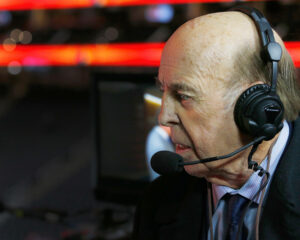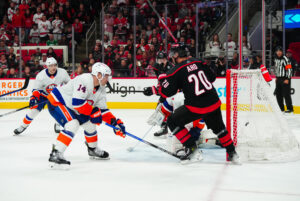Earning a contract that pays at least $10 million annually is rarefied air in the NHL. Only 15 players in history have signed such NHL contracts. Deals that big allow teams to sign the best players to long-term contracts in hopes of team success. History shows that such deals have actually hurt the team more than help.
Big NHL Contracts
The $10 Million NHL Contracts
An NHL contract with an average-annual-value above $10 million had never been seen until 2014 when the Chicago Blackhawks signed both Johnathan Toews and Patrick Kane to deals averaging $10.5M per year.
Since then, NHL contracts at or above the $10 million average-annual-value thresholds include:
- Connor McDavid: $12.5 million
- Artemi Panarin: $11.6 million
- Auston Matthews: $11.6 million
- Erik Karlsson: $11.5 million
- John Tavares: $11 million
- Drew Doughty: $11 million
- Mitch Marner: $10.9 million
- Carey Price: $10.5 million
- Anze Kopitar: $10 million
- Jack Eichel: $10 million
- Sergei Bobrovsky: $10 million
There are 15 players currently on deals at or above $10 million annually. Among those 15 players, 10 teams are represented. Teams that have already completed at least one full season with such contracts are the Chicago Blackhawks, Edmonton Oilers, Toronto Maple Leafs, Los Angeles Kings and Montreal Canadiens.
How Those Contracts Have Done
Teams with a contract averaging $10 million annually or higher have completed 11 full seasons. Only five times have those teams qualified for the postseason.
Chicago:
- 2015-2016 season (Lost in the first round to St. Louis Blues)
- 2016-2017 season (Lost in the first round to Nashville Predators)
Los Angeles:
- 2015-2016 season (Lost in the first round to San Jose Sharks)
- 2017-2018 season (Lost in the first round to Vegas Golden Nights)
Toronto:
- 2018-2019 season (Lost in the first round to Boston Bruins)
Of the five teams that made the playoffs with such contracts on their payroll, none have advanced beyond the first round. It’s an interesting correlation between the highest-paid players and team success. Of the 10 teams with such contracts this year, only three of them currently sit in a playoff position.
The NHL salary cap is $81.5 million for the 2019-2020 season. A contract with an average-annual-value of $10 million would dedicate over 12 percent of a team’s salary cap space to one player.
While it can not be determined as the only factor, it seems that contracts dedicating over 12 percent of cap space to one player are causing the team’s more harm, even if it means locking up a generational talent.
Out of every Stanley Cup Champion in the last 10 seasons, the only team to have a player consuming more than 12 percent of the team’s cap space was the Pittsburgh Penguins in 2015 and 2016 (Evgeni Malkin at 13.31 percent).
An interesting note about that Pittsburgh team is the fact that Sidney Crosby voluntarily took less money on his last contract. Something he spoke about on the Spittin’ Chiclets podcast in August. “I was willing to take a little less,” said Crosby. “Taking a little less doesn’t work if everyone else doesn’t take a little less.” Crosby went on to praise his teammates Malkin, Kris Letang, Chris Kunitz and Pascal Dupuis for taking less money on their contracts.
Everybody Else
Recent history has shown that it has been beneficial for players to sign team-friendly deals in order to have sustained success. Something that Colorado Avalanche center Nathan MacKinnon spoke about in an interview with Forbes last week, “On my next deal, I’ll take less again,” said Mackinnon. “Because I want to win with this group.” MacKinnon’s current deal, that he signed in 2016, has an average-annual-value of $6.33 million (8.36 percent of cap space).
In CBS Sports most recent NHL Power Rankings the top teams are the Boston Bruins, Washington Capitals, New York Islanders, St. Louis Blues, and Avalanche respectively. None of those teams currently have a deal worth more than $10 million annually. Boston’s top line of Brad Marchand, Patrice Bergeron and David Pastrnak has seen each player agree to team-friendly deals in order to help the rest of the team. The largest deal among those three is Bergeron at $6.87 million annually (8.62 percent of team cap space).
Of the 10 largest contracts under $10 million annually, eight of those players are on teams currently in a playoff position.
What This Means for the Future
This trend is bound to change with the salary cap increasing every year. Eventually, more contracts of this magnitude will be signed and teams with those contracts will have success. However, recent history has shown that spending top dollar for top players may be detrimental to the team. Or at least make it much harder to win.
Spending less money on top players grants more money for the team to spend in other areas. Having a combination of good and great players is a recipe for success, but so is having those players on good and great deals.
It’s up to the player and the organization to come to fair deals that satisfy both sides. Enough money to entice a player to sign a contract but not enough to handcuff the team financially.
Main Photo:






